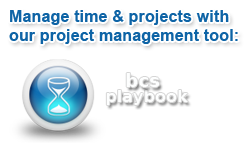As customer demands and regulatory requirements increase, risk management has evolved from a technical necessity into a strategic imperative for companies of all sizes. In today’s marketplace corporations must implement risk management processes to map and mitigate risks that can prevent them from achieving their business goals.
BCS can work with your company to implement and automate the risk management process, providing tools to inventory, analyze, evaluate and treat risks. Once the framework is in place, BCS will deliver quantitative and qualitative information on identified risks, help to prioritize actions, support the decision making process, and track improvements as risks are addressed.
How BCS helps you implement a risk management process:
- Establish a framework enabling future activity to take place in a consistent and controlled manner
- Improve decision making, planning, and prioritization by providing a comprehensive and structured understanding of business activity, volatility and project opportunities and threats
- Enable a more efficient allocation and use of resources within the organization
- Reduce volatility in non-essential business areas
- Protect and enhances assets and corporate image
- Develop and support employees and stakeholders and maintains the organization’s knowledge base
- Optimize operational efficiency
How BCS helps your business manage risk:
- Creates a Security Scorecard including metrics and indices
- Provides an overview of business risks, prioritizing investments according to each asset’s importance to the business
- Provides a centralized console for risk and compliance management
- Manages security requirements in multiple audits, eliminating redundant costs and unnecessary controls
- Visualizes risks management performance
- Supports the creation of business continuity plans, facilitating maintenance and rapid recovery of information and procedures
- Generates technical and executive reports
- Collects and centralizes data relating to technology assets (software and equipment) and non-technology assets (people, processes and environment)
- Generates risk indicators for corporate governance


